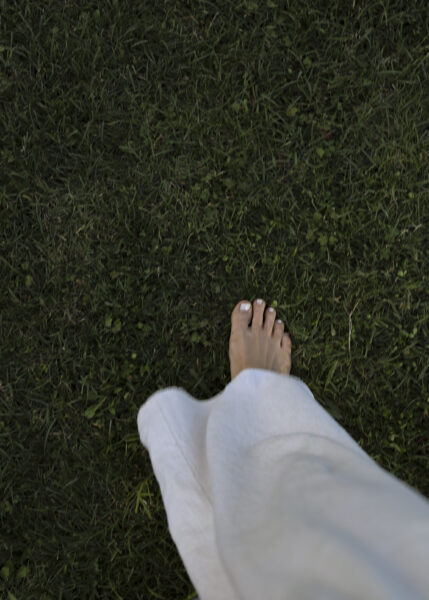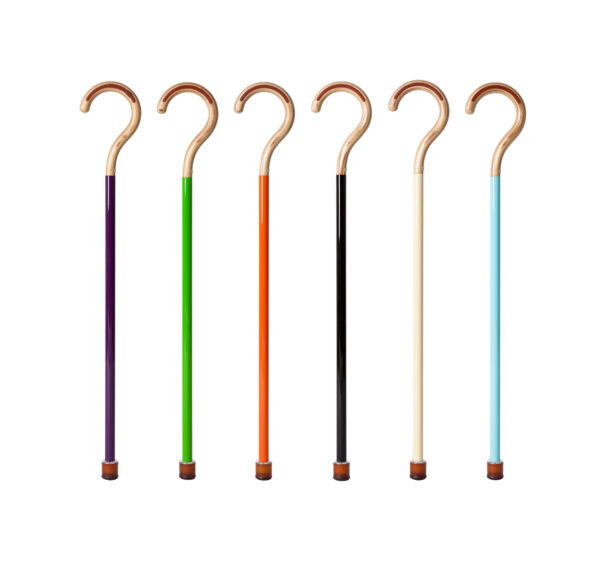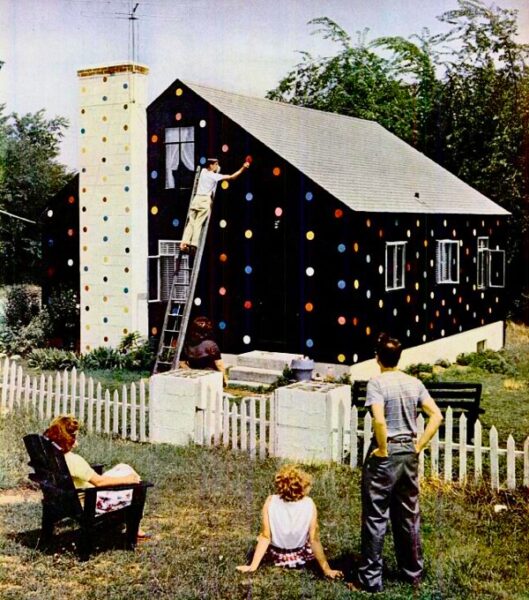An easier way to get unstuck

Did you know there was a time when I thought I’d never actually write Joyful?
This was back when I was at IDEO, and The Aesthetics of Joy was a blog I worked on on my weekends and early mornings. One of my favorite things to do was to take my teensy laptop (oh how I miss you 11” MacBook Air) down to the coffee shop on the corner of Carroll and Smith, duke it out for a window table with the stroller moms and the grizzled oldsters doing the crossword puzzle, and cozy in to crunch out some words on my “book proposal.”
Except I never actually seemed to make much progress on the proposal. I’d tell myself, “I’ll finish this blog post and then I’ll get to the proposal.” But then my tea would be empty and I’d be getting dirty looks from a crossword puzzler tired of sitting on the stools at the bar. So I’d say, “I’ll keep working on this at home.” But then I’d get home and it would be time for lunch. And so on until another weekend passed, and that word doc BookProposal.docx lay untouched on my hard drive.
I knew what the problem was. I didn’t have enough uninterrupted time. How could someone write something as important as a book proposal in these broken slivers of time I had to work with? I could barely get into it before it was time to go back to my very full day job.
An Easier Way to Get Unstuck
So I started planning my vacations as writer’s retreats. My friend Deirdre was going away and offered to let me use her house in Charleston for a week. I spent a highly caffeinated five days in her local coffee shop dismantling the structure of the ten aesthetics and then putting it back together. By the end, I was exactly where I started. No introduction, no sample chapters, no closer to the dream becoming a reality.
If it wasn’t time, then maybe my problem was that I didn’t have the right systems. I just needed to get more efficient at the writing process. So I spent hours reorganizing my Evernote, putting all of my notes for the book into clearly labeled buckets. I downloaded a new, distraction-free editing software. And I couldn’t resist picking up some colorful pens for some color-coded note action.
Well, my notebooks sure looked beautiful. And I can certainly say that this organization ended up being helpful when I did get around to finally writing my book. But you can probably get where this is going. Week after week, my proposal continued to gather digital dust.
Resistance
Around this time, I happened upon The War of Art, by Steven Pressfield. The thesis of this book is effectively that creative work (or achieving any meaningful goal) is hard, and so our minds and bodies generate resistance. This resistance can take the form of distraction, procrastination, or even other work. To get anything done, we have to push through our resistance and just do the work.
Aha! I thought. My problem was resistance! All those blog posts and organizing sessions felt productive. But really, they were just resistance to working on my book proposal. I just needed to sit down, push through, and write the damn thing.
Except I couldn’t seem to do it. And every day that went by, I felt like more and more of a failure. Occasionally I’d meet up with a mentor who had taken an early interest in the project. “How’s the book going?” they’d ask, enthusiastically.
“Oh, it’s going,” I’d mumble, ashamed.
Months turned into years, and one day I discovered that the agent who’d been so interested in the book during my first giddy year of working on it had since left the field. I’d taken so long to write my proposal that my potential agent wasn’t even an agent anymore! Let me tell you, that was a LOW.
But this is how we are taught to overcome obstacles in our society. We’re conditioned to see being stuck as a sign that we are not motivated enough or not disciplined enough to “make it happen.” We’re taught that dreams take sacrifice, whether of sleep or health or pleasure. We’re taught that we can systemize our way out of problems, and that if something isn’t working, there’s a tool or a planner or an app that will fix it.
But I tried all those things.
And where did it get me? To a point where I was burned out and exhausted from filling up all my free time with work, yet simultaneously ashamed that all that work was adding up to nothing.
Of course, you know that something eventually shifted, because I did end up completing the manuscript for Joyful, just about ten years after I first had the idea.
What changed?
I realized that what I needed wasn’t to push harder or sacrifice more or be more organized. What I needed was to understand the tension between what was pulling me forward, and what was holding me back.
Again and again, I’ve found that stuckness isn’t something we can push our way through. It’s a fundamental conflict between a part of you that wants to make a change, and a part that wants to stay right where you are. At the simplest level, we can see this as a tension between joy and fear.
Joy moves us toward the things we want in life. Fear holds us back to try to keep us safe.
The force pulling me forward was the joy of getting to fulfill my childhood dream of writing a book, and experience the thrill of sharing the ideas that I’d invested so much of myself in with the world. The force pulling me back? Perfectionism. The fear that I couldn’t possibly create a book that lived up to all of the fantasies I had for it.
Every time that I sat down to write, I felt the pressure of trying to write that perfect book proposal bearing down on me. If a sentence came out awkward or clunky, I’d obsess over it until it sounded “right.” Sometimes that meant an entire writing session disappeared like the fabled weekend Flaubert spent moving a comma, and then moving it back. Meanwhile, I began to develop a deep resentment of other people’s success. (Hello, Green-eyed Monster!) I felt threatened every time a book came out that touched the subject of joy. “I’m going to miss my chance,” I lamented, “Someone else is going to get there first.”
On my best days, I thought, “My book is going to be amazing! It’s going to change lives!” On my worst days, I thought, “I’m a complete hack, and everyone who reads this is going to know it” and “You know what’s worse than not having written a book? Writing a mediocre book that no one even reads.” Womp womp.
fear of failure
The fear of failure had led me to a place where I couldn’t be anything but a failure — because I was so afraid to try.
Maybe some people can be successful by psyching themselves up and bulldozing through with brute force. But even if we can move forward that way, doesn’t it sound painful?
I’ve come to believe that when we’re stuck, it’s not brute force we need. It’s tenderness.
Because the thing I’ve learned about fear is that covering your ears and singing LA LA LA only makes fear shout louder. Getting past our fears can’t happen when we’re pretending they don’t exist.
This is part of the reason we decided to create the Killjoys Quiz we released last week. Sometimes the fears that hold us back from joy are hard to pinpoint. By naming seven of the most common fears, we hope to help bring some of those joy-crushing inner voices up into the light.
Once we know what those fears are, we can develop strategies to quiet them.
For me, that lay in unlearning the perfectionist programming I’d been steeped in my whole life. For example, I’d grown up hearing adults in my life make fun of those who made grammatical or spelling mistakes, believing these to be a sign of either laziness or lack of intelligence. I’d often heard people criticized for not knowing things that the adults in my life believed should be common knowledge. And it was common for me to hear books and writers judged as “good” or “bad,” leading me to believe that my book had better hit the marks to fall into that “good” category.
All of these things were part of the air I breathed growing up — in my home, my school, and society at large. To soothe the fears that underpinned my perfectionism, I had to reformulate my judgments, and disentangle my worth from my work.
What I Did
Whenever I got stuck, I reminded myself that an imperfect book was better than no book. That perfection didn’t really exist, but that joy was available, if I kept writing. That mistakes didn’t make me bad or lazy or a hack. It made me a human being who couldn’t possibly know everything. What mattered was that I knew what was important.
What about you? If you’re feeling stuck right now, what is it you want to move towards? What fears are holding you back? What might happened if you freed yourself from those fears, and started moving toward joy?
If you’re feeling stuck and are looking for a gentle, joyful way to make progress, join me for this week’s workshop How to Get Unstuck: Stop waiting for happiness, start creating joy. This session will help you let go of the fears that are holding you back, and find playful ways to start making your dreams a reality. Get all the details and sign up here.





Discussion (4 Comments)
Love this blog post, Ingrid! The killjoy-quiz was also a good one. I forwarded it to two friends. (And as a translator, let me say I love the English word “killjoy”.)
“Yes, but. . . ”
I get the point about perfectionism holding one back, and wanting to be perfect from the start is certainly going to be an obstacle (just start putting thoughts down, leave details for later!), but as someone who truly believes that grammar and punctuation are designed to improve communication (I hear commas when I read!), I do think that striving to get it right *in the final project*—for sure, not in the first draft, or the third, or maybe even the twenty-third, is a good goal. That’s not to beat oneself up if an error never goes uncaught—stuff happens—but high standards for *a finished product* makes sense to me.
Οn this same subject, some tender can be found in Oliver Burkman’s blog https://www.oliverburkeman.com/posts
Your beautiful book did change lives – mine for one. The wait was worth it.